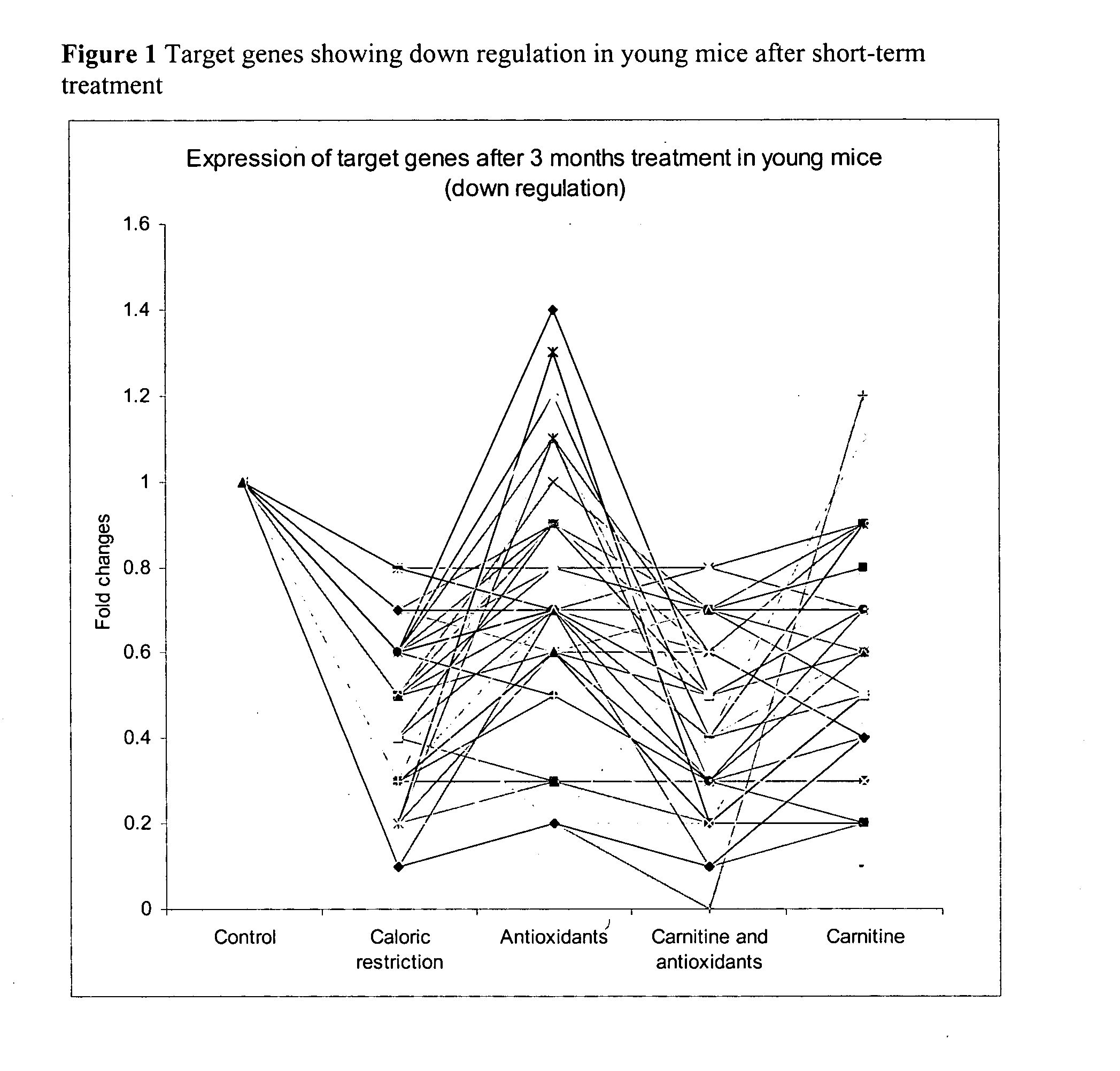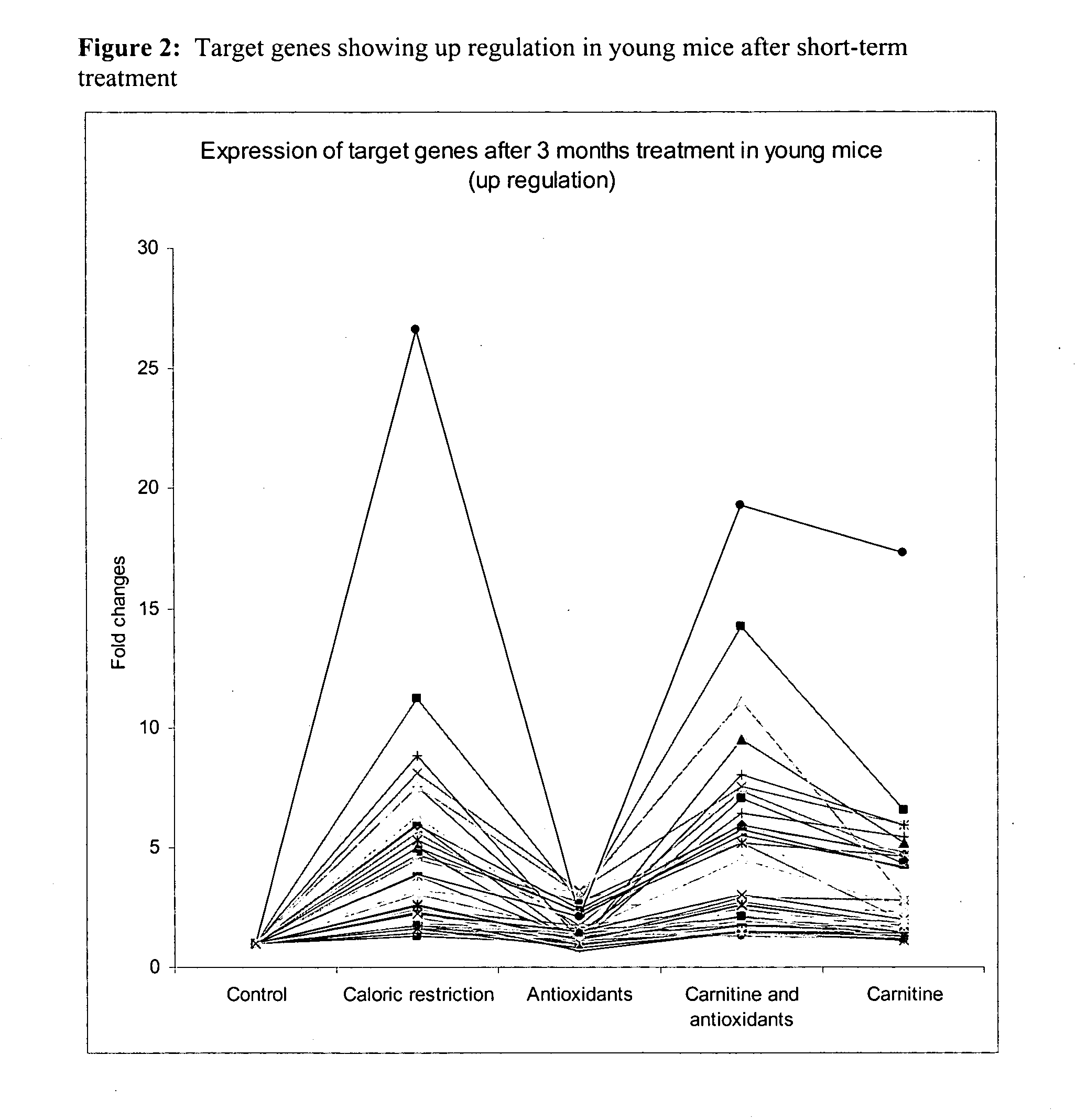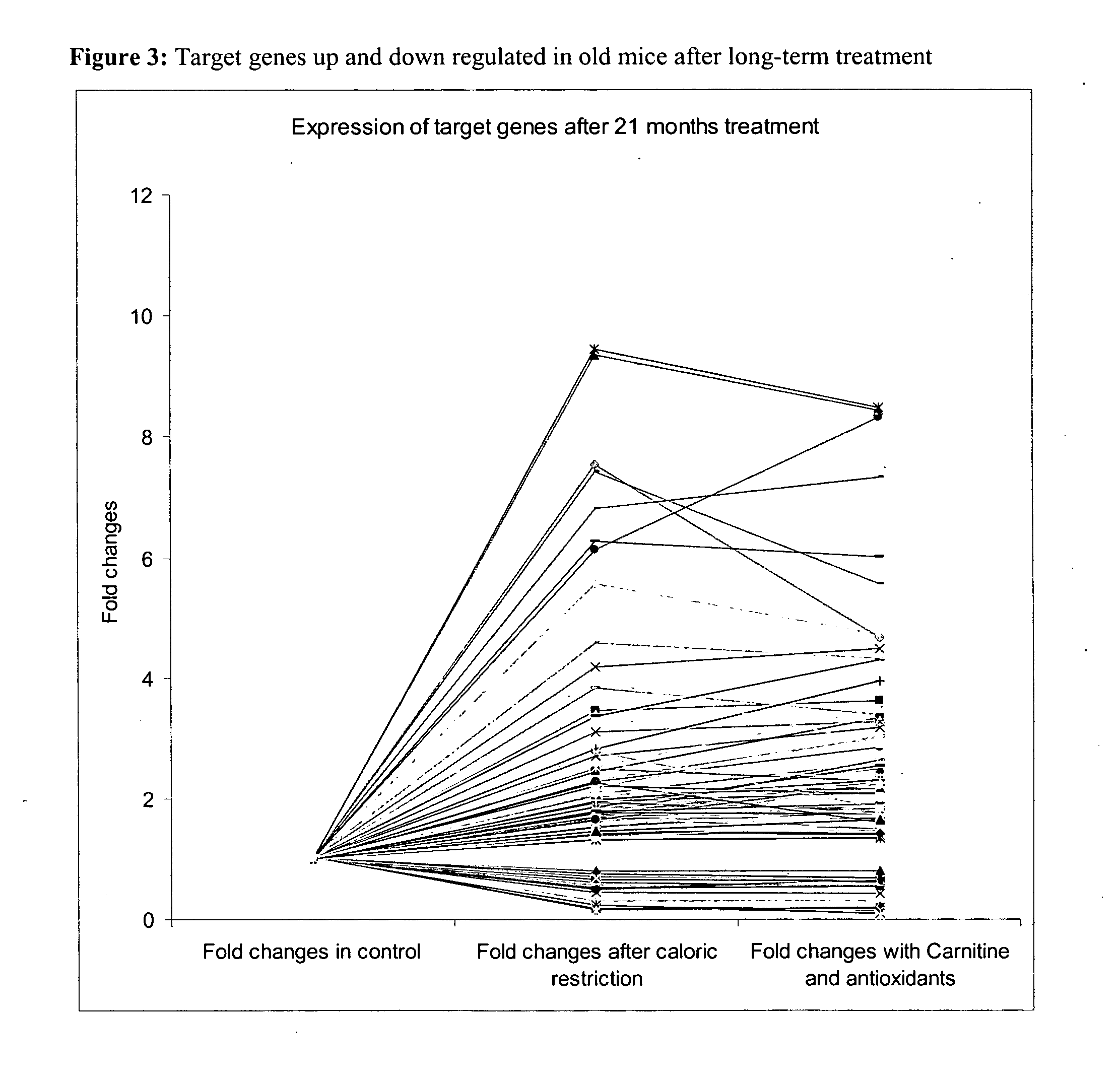Method for improving age-related physiological deficits and increasing longevity
- Summary
- Abstract
- Description
- Claims
- Application Information
AI Technical Summary
Benefits of technology
Problems solved by technology
Method used
Image
Examples
example 1
Effect of Dietary Interventions with Antioxidants and Activators of Mitochondria Metabolism in a Murine Model by Gene Expression Profiling in Skeletal Muscle
[0081] Study Design:
[0082] Dietary intervention was of 3 months, all animal groups were fed Ad libitum except for the group of caloric restricted mice which as fed 67% of the daily food consumed by the control Ad libitum group. Animal weight was measured once a week.
[0083] The effect of short and long nutritional intervention was investigated. The short-term dietary interventions with diet A, B, C, D and F was initiated in young mice and lasted for three months. In a similar way, long-term interventions were initiated at three months of age for the following diets A and B and D and lasted twenty-one months.
[0084] Animals:
[0085] Male mice C57 / B16 were obtained from Iffa credo (France) at 9 weeks of age. Upon arrival mice were housed by groups of 6 animals. After 3 weeks adaptation, mice (12 weeks old) were randomized 6 group...
example 2
Dry Pet Food
[0099] A feed mixture is made up of about 58% by weight of corn, about 5.5% by weight of corn gluten, about 22% by weight of chicken meal, 2.5% dried chicory, 1% carnitine, and 1% creatine for stimulation of energy metabolism, 0.1% Vit C, vit E (150 IU / kg), 0.05% grape seed proanthocyanidin extract and 1% cysteine as antioxidant, salts, vitamins and minerals making up the remainder.
[0100] The fed mixture is fed into a preconditioner and moistened. The moistened feed is then fed into an extruder-cooker and gelatinized. The gelatinized matrix leaving the extruder is forced through a die and extruded. The extrudate is cut into pieces suitable for feeding to dogs, dried at about 110° C., for about 20 minutes, and cooled to form pellets.
[0101] This dry dog food is intended to improve or restore the age-related deficits in dogs.
example 3
Dry Pet Food
[0102] A feed mixture is prepared as in example 1, using 2% carnitine for stimulation of energy metabolism and 0.05% ginkgo biloba extract as antioxidant. Then, the fed mixture is processed as in example 1. The dry dog food is also particularly intended to improve or restore the age-related deficits in dogs.
PUM
| Property | Measurement | Unit |
|---|---|---|
| Dimensionless property | aaaaa | aaaaa |
| Dimensionless property | aaaaa | aaaaa |
| Gene expression profile | aaaaa | aaaaa |
Abstract
Description
Claims
Application Information
 Login to View More
Login to View More - R&D
- Intellectual Property
- Life Sciences
- Materials
- Tech Scout
- Unparalleled Data Quality
- Higher Quality Content
- 60% Fewer Hallucinations
Browse by: Latest US Patents, China's latest patents, Technical Efficacy Thesaurus, Application Domain, Technology Topic, Popular Technical Reports.
© 2025 PatSnap. All rights reserved.Legal|Privacy policy|Modern Slavery Act Transparency Statement|Sitemap|About US| Contact US: help@patsnap.com



